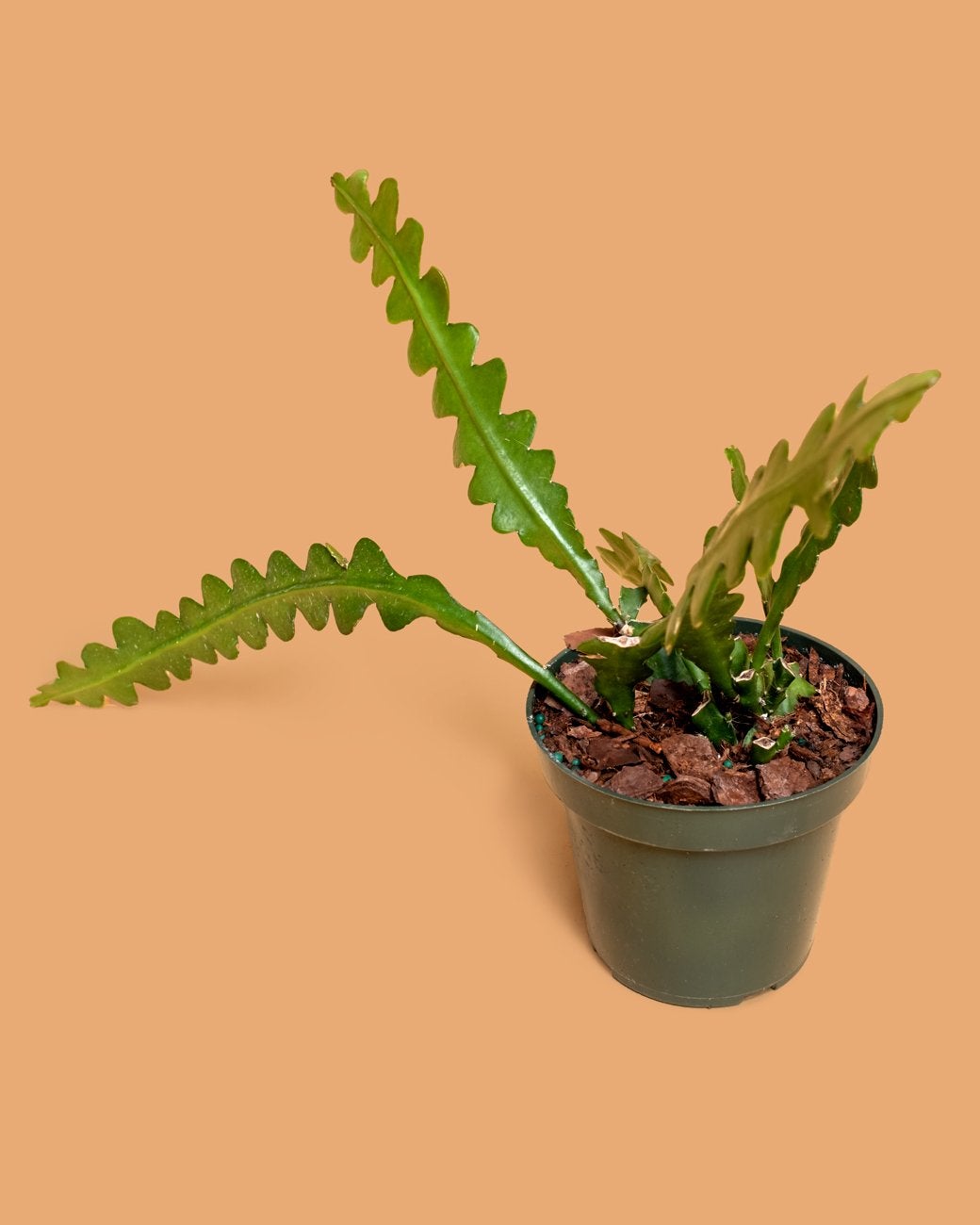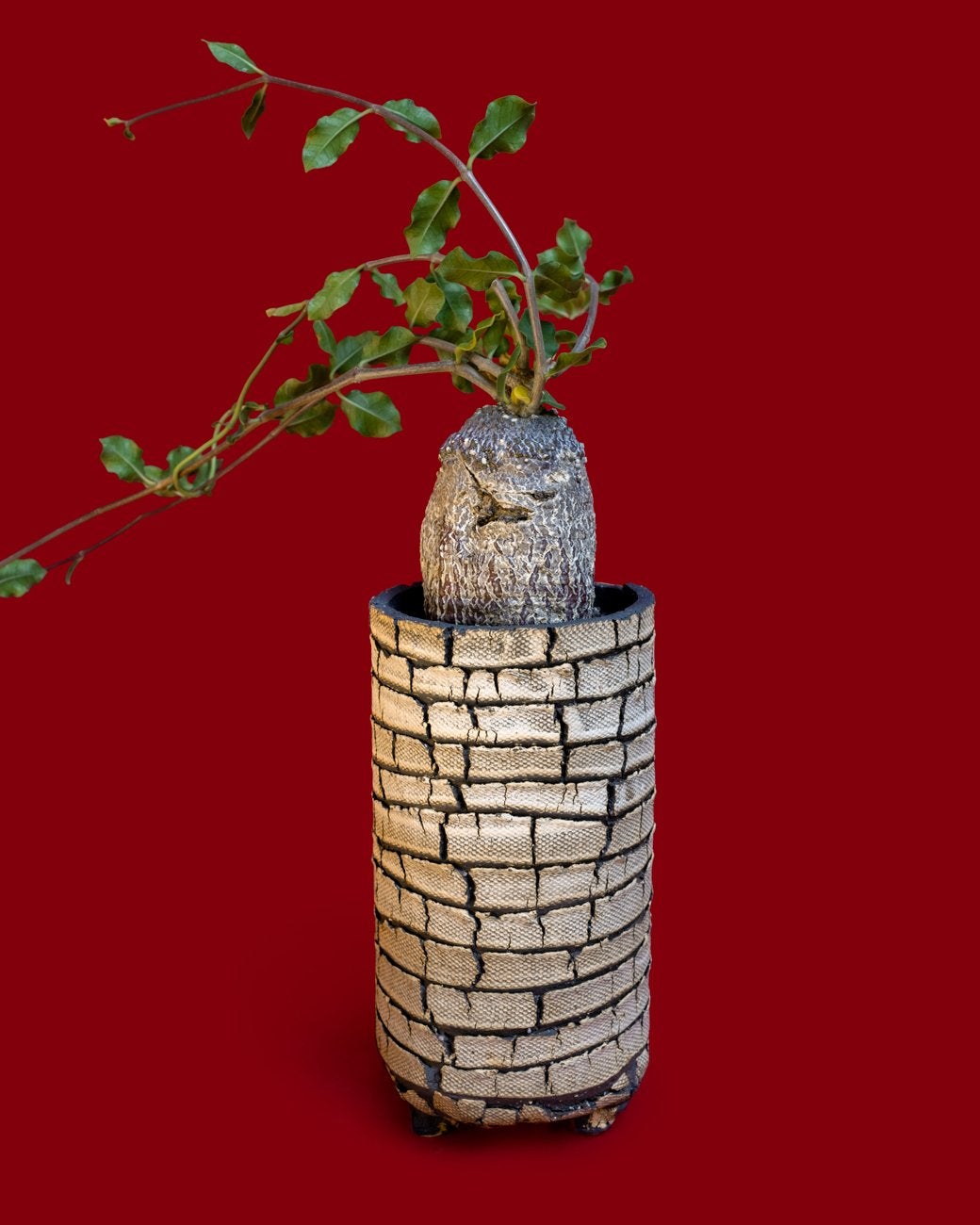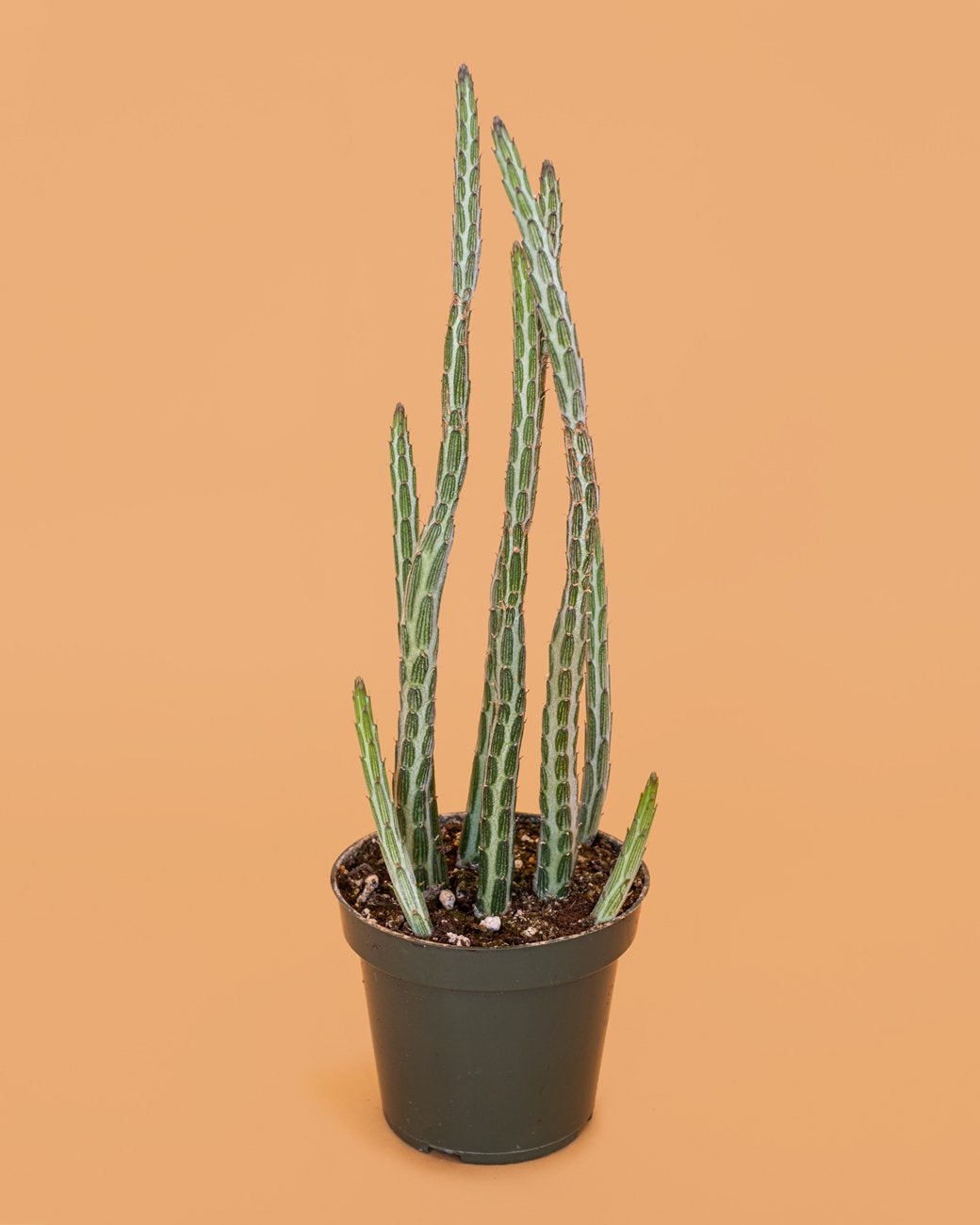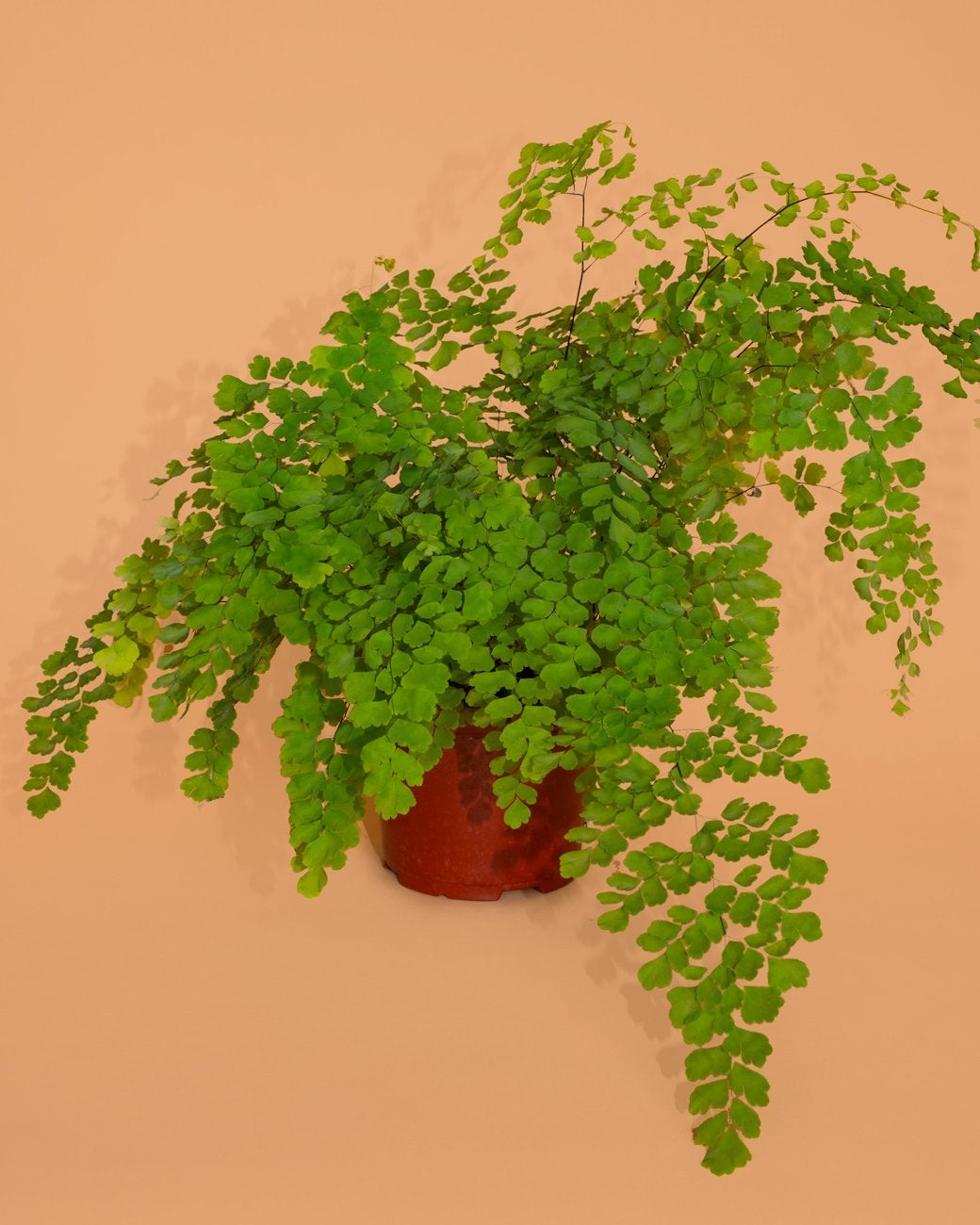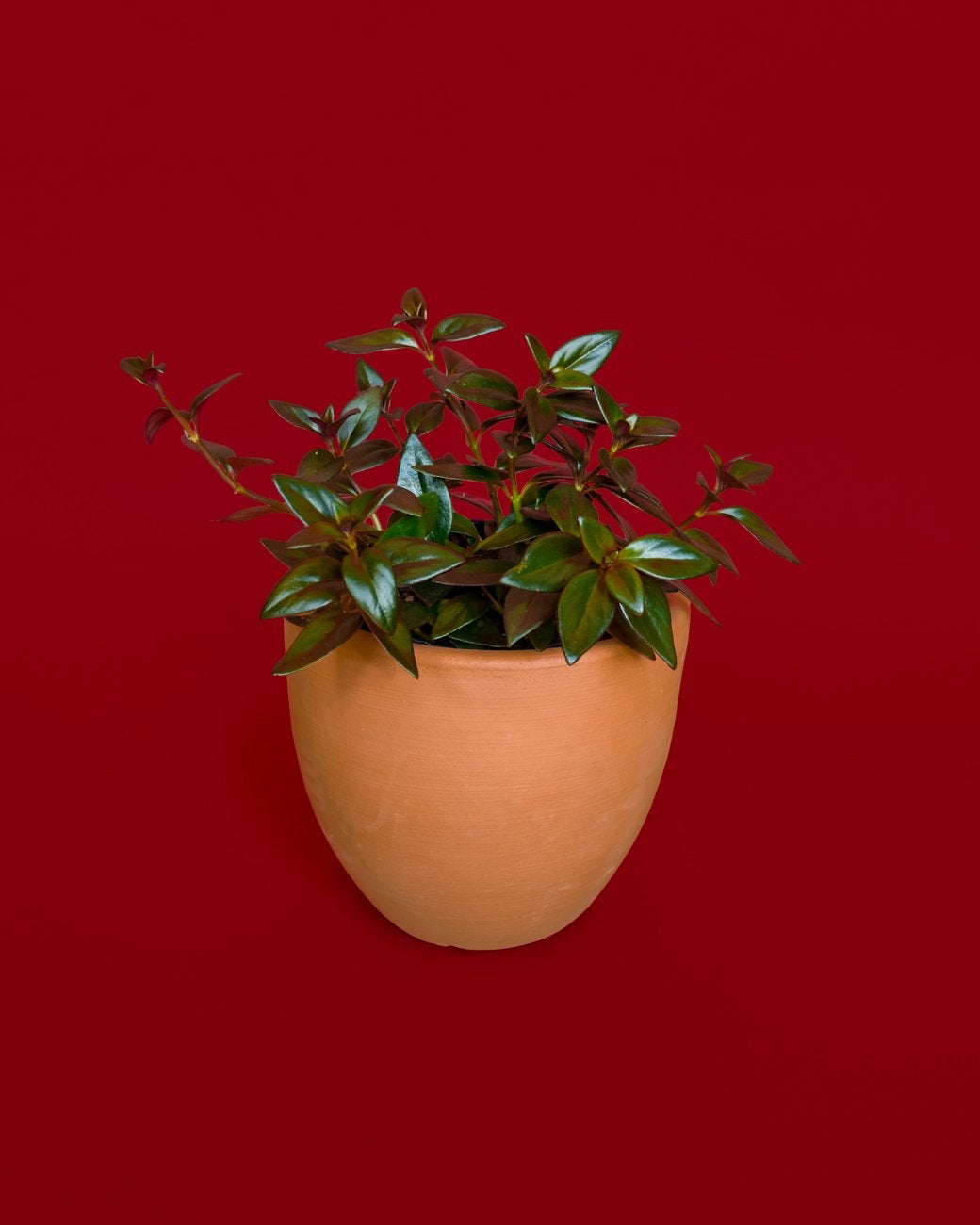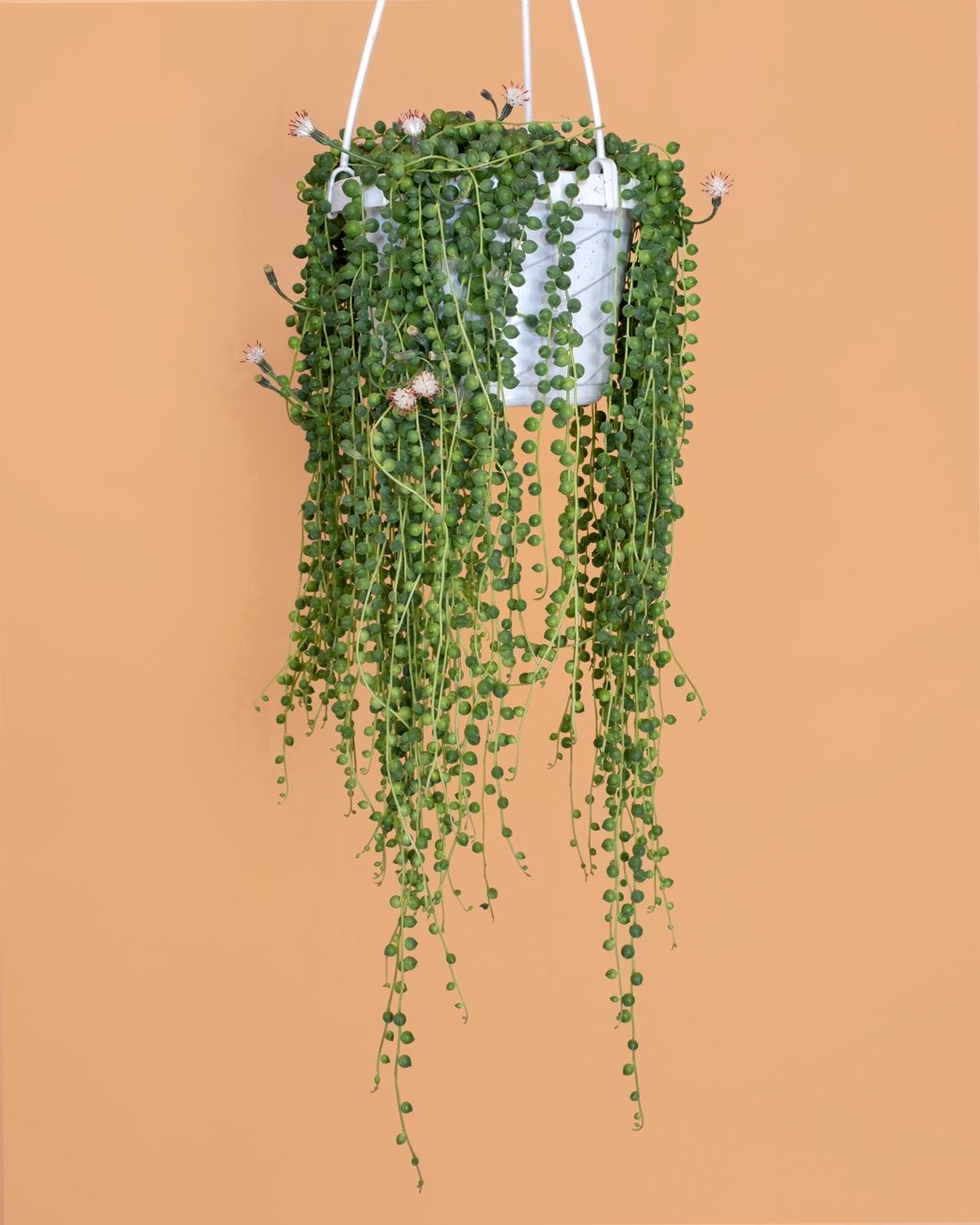Ask A Plant Queen: What Are The Best Plants For Intermediate-Level Growers?
Welcome to Ask A Plant Queen, where with the help of Tula founder and bona fide plant expert Christan Summers, we'll answer every question you've ever had about the care, keeping, and presentation of houseplants. No need for you — or your pretty green pals — to thank us.
Question: "Since many of us are spending a lot more time at home, and thus have a lot more time to devote to taking care of plants, what are some more time-consuming or challenging plants you'd recommend for intermediate plant-owners who want to take it to the next level? And what are the most important things for them to know about caring for them?"
AdvertisementADVERTISEMENT
Christan's Answer: I love this question! Graduating from the common plant and learning about unique and more challenging plants is what Tula is all about. The diversity of plants is astounding and there are so many that can be grown indoors with a little extra learning, love, and attention.
So let's dive right in, starting with arid plants. Arid plants are succulents, cacti, euphorbia, agave, etc. They are what we know best as those sweet rosette-looking plants that every bodega, Home Depot, and plant shop sell. But there are so many more arid plants to explore! The diversity within the arid plant family is so vast it would take a lifetime to learn all the species. The exploration is endless — the facts, the new knowledge, the learning will always be there. That of course goes for plants in general, but I personally love arid plants, as they are easy to care for indoors (with the right conditions), and their structural growth is unique with stunning blooms that are well worth the annual wait.
So let's dive right in, starting with arid plants. Arid plants are succulents, cacti, euphorbia, agave, etc. They are what we know best as those sweet rosette-looking plants that every bodega, Home Depot, and plant shop sell. But there are so many more arid plants to explore! The diversity within the arid plant family is so vast it would take a lifetime to learn all the species. The exploration is endless — the facts, the new knowledge, the learning will always be there. That of course goes for plants in general, but I personally love arid plants, as they are easy to care for indoors (with the right conditions), and their structural growth is unique with stunning blooms that are well worth the annual wait.
So first off, what do you need to grow arid plants happily indoors? Sun, heat, and water. That’s it. If you have a sunny, hot windowsill, any succulent will be happy. If you don’t have much sun, then feel free to skip down to the tropical plants I’ve outlined below. One big misconception about growing succulents indoors is that they don’t need to be watered. But they do! They are made of water and without being watered, especially during the hot weather months, they will not grow and bloom and give you all that they can give. The trick is that you need the right balance of sun, heat, and water.
We have a great video about how to properly water arid plants:
We have a great video about how to properly water arid plants:
AdvertisementADVERTISEMENT
Now, let's get into some specifics...
Fockea edulis is a semi-deciduous caudex plant that is native to South Africa and Namibia. It is collected by caudex-loving plant people and the very special thing about caudex plants is that they all grow and twist in different shapes and forms. Collectors expose the caudex over time to show off its beautiful structure. For most collectors, when growing caudex plants like the Fockea, you are focused on the caudex — not the leaves. Which is an entirely different experience from most other plants grown indoors.
ILLUSTRATED BY ANJA SLIBAR
What is a caudex? It is a large, bulbous stem that acts as a water reservoir for plants. All plants that have formed a caudex grow in extremely dry and hot environments. They have thus been forced to conserve water and have learned to do so within their stem which in its natural habitat grows underground to protect from the harsh sun and heat. The caudex stems are only exposed in cultivation. What is semi-deciduous? Deciduous plants are those that drop their leaves during seasonal changes. Every year, the Fockea edulis will drop most, if not all, of its leaves as it enters into the drought season. It must do this to preserve energy and water. Some collectors cut back all the leaf stems that have grown during the grow season, others keep the stems. It’s up to you. The leaves grow in a mass and cling onto nearby plants to climb and catch as much sunlight as possible. When grown outdoors, the fockea grows a mass of leaves, which is used to catch water and store energy, but also used as a protection against harsh sun rays that could burn the caudex if exposed. When growing a fockea indoors, expect leaf drop in late fall into winter and stop watering in the mid winter months (Dec-Feb). If your home environment is hot and sunny and the fockea keeps its leaves then you can continue to water sparingly. Watch the plant, it will ‘tell’ you what it needs.
AdvertisementADVERTISEMENT
Senecio rowlenyanus is commonly referred to as the "String of Pearls." Over time, these beauties grow long, delicate strands of green pearls and in the early summer, they bloom white pom-pom blossoms that give a delicate sweet floral aroma. Some of you may already know this plant... and may have already killed one. Don’t give up! This is not an easy succulent to grow if you do not have the practice and the right sun/water balance. It’s all about that balance. Find the sunniest spot in your home to hang or perch this beauty. Make sure you see sun rays on the plant for at least 2-3 hours a day. You want to see a hard shadow cast onto the plant if you were to wave your hand in front of it, blocking the sun. If you don’t ever see a hard shadow, then you have indirect light which is not a good light condition for the Senecio.
Wait until the soil is dry, dry, dry before you water. Practice the weight test — my tried and true trick for watering succulents. Wait until the plant actually feels light in weight. Pick it up and hold it in two hands, does it feel light and airy? Is the soil hardened at the top and contracting from the sides of the planter? If yes, it's time to water! Take your beauty to the sink and give it a good shower. You must have drainage for these plants. So, water thoroughly — a few times through until you see water drain from the bottom of the planter. When you pick it up after watering it should feel heavier. Put it back in its sunny location and wait until it's light and airy again. That’s it! To get it to bloom, just give it the best sun/water conditions and fertilize once a month during the summer grow season. Use a liquid succulent fertilizer and dilute at half strength.
AdvertisementADVERTISEMENT
Kleinia stapeliiformis aka "The Pickle Plant" is also a Senecio and best known for its unusual surface pattern and structure that looks like a pickle. It is native to South Africa where it grows amongst rocky terrain and under desert conditions. In ideal conditions, these beauties grow fast. Their stems become long and flop over to grow on their side. The prize with the Kleinia are the blooms, that are a vibrant red, they also look like a pom-pom and flower in the late winter, early spring. Sun/water care is the same as the Senecio rowlenyanus above. Propagation and pruning are key with the Pickle Plant. As they are fast growers they can quickly become wild and unruly. If you like that, great! If you want to give your beauty a haircut every year also great, and you have baby pickle plants to give your friends and family.
How to propagate: Cut anywhere on the stem. Anywhere. These plants are so easily propagated. Once you cut, allow the cut stem to callous over before you plant into soil. Leave the cut stem in a cool, dry area that does not receive direct sunlight for 1-2 days to callous. Once calloused, plant into a gritty, fast-draining soil. Do not water. Wait about a week to introduce water to the soil. You are waiting for roots to establish. If watered before roots establish you can easily rot the stem. After the plant blooms also prune the spent flower stems to keep clean of plant debris.
How to propagate: Cut anywhere on the stem. Anywhere. These plants are so easily propagated. Once you cut, allow the cut stem to callous over before you plant into soil. Leave the cut stem in a cool, dry area that does not receive direct sunlight for 1-2 days to callous. Once calloused, plant into a gritty, fast-draining soil. Do not water. Wait about a week to introduce water to the soil. You are waiting for roots to establish. If watered before roots establish you can easily rot the stem. After the plant blooms also prune the spent flower stems to keep clean of plant debris.
AdvertisementADVERTISEMENT
Tropical plants, meanwhile, are more complex in care. While arid plants are easy —sun/heat/water — tropical plants are a bit more dynamic with their needs. Some need more sun, some need more water, some need more organic matter, some less. With tropical and leafy plants, you can tell so much about how they have adapted and evolved by studying their growth habit, leaf design, and stem structure. I also encourage you to always learn the botanical name of your plant so you can research where they come from and how their native environment informs the microclimate they need to grow successfully indoors.
ILLUSTRATED BY ANJA SLIBAR
The Epiphyllum anguliger, aka the "Ric Rac Cactus," is a night blooming epiphytic cactus native to the evergreen forests of Mexico. It is prized for its incredible night flowers as well as its jagged growth structure. An epiphytic plant, it will attach onto other surfaces, mostly trees, in order to climb and reach more sun and water. Epiphytic plants are not parasitic when they attach onto other surfaces; they are only using these surfaces to climb and get more sun and water. Orchids are epiphytes! They want to do the same thing. When growing the Ric Rac Cactus indoors, it wants a healthy amount of direct sun, but not too much. It has evolved to grow under the canopy of large trees so it is accustomed to dappled direct sunlight throughout the day. As it grows, you will see aerial roots push out on the underside of the leaves. You can build a moisture retentive stick or pole for the roots to attach to and climb, or just let the foliage hang and wander. These plants are shy bloomers and will only bloom once matured. To encourage blooms, provide the optimal light and water conditions as well as a phosphorus-rich fertilizer during the grow season. Also keep them rootbound and allow for a little cold draft in the dormant season. Cold encourages sugar conservation which can then lead to bold blooms. When they bloom the flowers will only last one night so be sure to stick around for the show. People have bloom parties for these beauties, you can actually sit there and watch the flowers open.
AdvertisementADVERTISEMENT
Adiantum pedatum aka Maidenhair fern is loved for its delicate and wispy foliage. What it is not loved for is its dramatic and quick deaths indoors! These are not easy plants to get right indoors, so if you have a few Maidenhair deaths under your belt, don’t feel bad. Here are the tricks:
Maidenhair fern need a few hours of direct sunlight — afternoon or early morning sun is perfect as it's warm but not as harsh as late morning or midday sunlight. Wait for the Maidenhair to dry just a bit before watering. Against popular belief that you should keep your ferns wet all the time, I have found great success in letting them get just a little dry between watering. Keep them in a room that is slightly cool and not too dry. Pruning is also necessary for healthy growth and when you start to see fronds that are turning brown and getting long and leggy, find the base of the frond and cut it off. New fronds grow from the base in a mass and the more you prune away spent leaves, the more energy the fern has to put into new growth.
Maidenhair fern need a few hours of direct sunlight — afternoon or early morning sun is perfect as it's warm but not as harsh as late morning or midday sunlight. Wait for the Maidenhair to dry just a bit before watering. Against popular belief that you should keep your ferns wet all the time, I have found great success in letting them get just a little dry between watering. Keep them in a room that is slightly cool and not too dry. Pruning is also necessary for healthy growth and when you start to see fronds that are turning brown and getting long and leggy, find the base of the frond and cut it off. New fronds grow from the base in a mass and the more you prune away spent leaves, the more energy the fern has to put into new growth.
Columnea gloriosa, aka Goldfish plant, is best known for its orange flowers that look like fat little goldfish. I love these plants for their dark and shiny leaves. And when they bloom, the orange flowers are a beautiful contrast amongst the foliage. As they grow, they can be transplanted into hanging baskets or placed on a shelf for the foliage to hang over. Native to South America and the Caribbean, they are accustomed to warm temperatures and humidity. They do not want too much direct sunlight and do best with a few hours of sunshine in the early morning or afternoon. Too much direct sun will cause the foliage to wilt and can cause sunburn. Not enough sun will cause legginess and you may not get it to bloom. The best way to encourage blossoms is to find a spot in your home with the ideal sun conditions. Water less in the winter, fertilize with a phosphorus-rich fertilizer in the grow season, keep these plants root bound until it's obvious they need to be up-potted, and remember that during the dormant season, a little cold draft helps the plant to conserve sugars which leads to more blooms. The Columnea gloriosa is also easy to propagate by stem cuttings. If ever the plant is getting too long or unruly, take a few stem cuttings and put them into water. Change the water once a week until you start to see new roots push out from the ends of the stems. Once you have roots you can introduce the stems into soil and voila! You have a new plant to grow and give away.
AdvertisementADVERTISEMENT
I could go on and on but I’ll end with saying that there are so many unique and dynamic plants to grow indoors so I hope this article inspires you to explore and diversify your plant collection.
AdvertisementADVERTISEMENT







